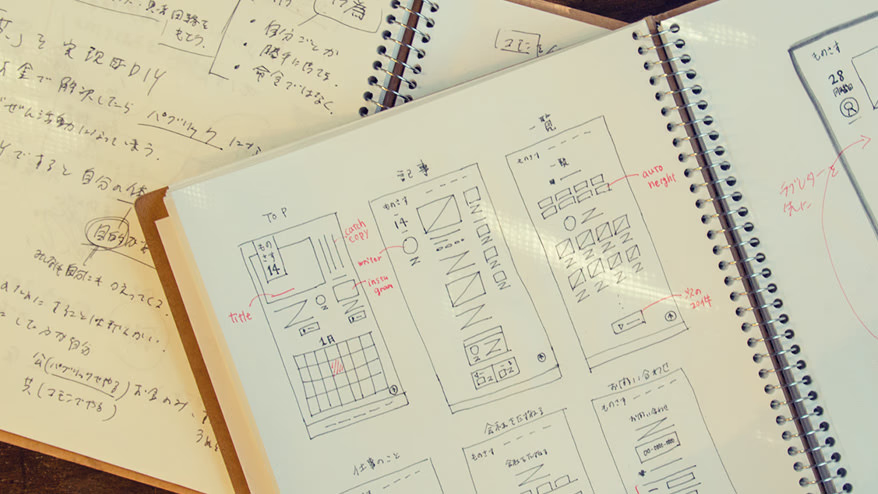This is the courtyard of the design department. I also work as the editor-in-chief of this website.
As I am posting this "What to Look for in Design" column, I thought a lot about what to write about, but considering my current situation, I decided to write about the relationship between design and editing. However, simply saying "editing" covers a very broad range, so this time I will talk about "editing our own company's web magazine."
Why is a web designer the "editor-in-chief"?
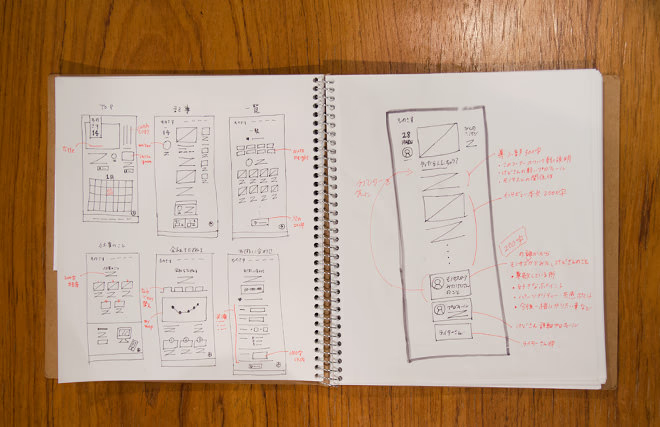
Handwritten wire on Monosas site
Some people, even within the company, may be wondering why I, a web designer, am working as the "editor-in-chief" of our company's website. I have no experience as an editor, and I'm sure a professional editor would tell me it's not that easy! However, thanks to the company's DIY culture, I was able to suddenly experience the role of editor-in-chief.
However, when it comes to a job that involves writing, the question arises as to how familiar you are with writing, and I don't think it's any more common than other people.
I used to love books (I studied Japanese literature), I worked at a bookstore, I often wrote my own diary, and after I got used to the internet, I started writing a blog. However, after various things happened and I entered the IT industry, I stopped writing a lot. The number of books I read per month has decreased significantly compared to before, and I only read the works of my favorite authors and subscribe to their email newsletters.
Currently working as a web designer, my job involves more consideration of visuals than words, and the only writing I do for work is email. So, I wouldn't say I have any special qualifications to be an editor-in-chief.
The close relationship between editing and design
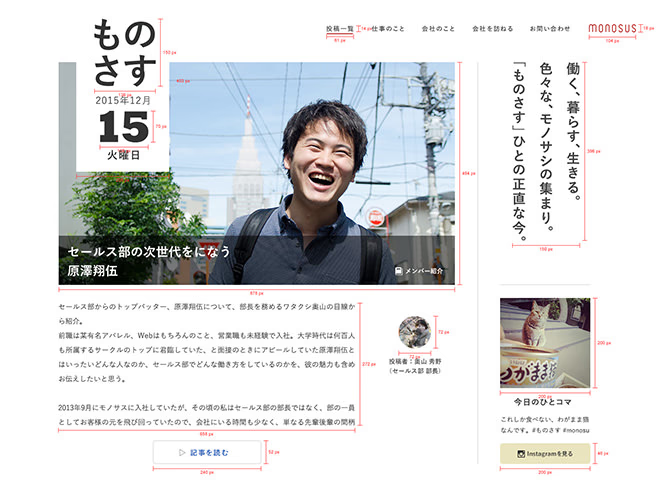
Monosus sight size design drawing.
However, one thing I've noticed is that editing is very similar to design work.
In what way? Well, it's similar in that they act like traffic controllers.
Web design involves laying out elements such as text and photos. Important messages are given a large size, and an effective balance between images and words is considered. This and that are the same type of thing, so they are grouped together, and the others are different elements, so they are presented in different ways. It's like sorting out information traffic.
On the other hand, editing text also involves "layout of words." Just as graphic design creates a screen by varying the density of elements, editing text also creates density by expanding on important parts of the context and glossing over less important parts. Also, leaving gaps for the reader to imagine by not saying everything and deliberately enjoying the aftertaste, or by using roundabout language, is similar to creating "white space" in design.
In other words, editing words overlaps with the act of design.
Editing can be thought of as the act of designing words, and conversely, you could say that the web design work I've done up until now has also been editing work.
Editors are visual storytellers?!
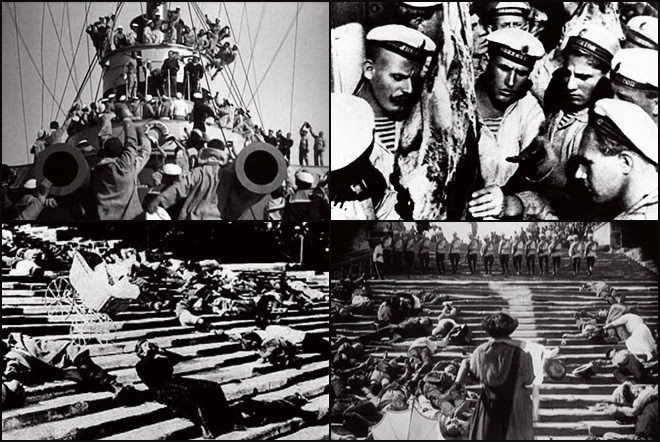
From Eisenstein's Battleship Potemkin (1925, Russia). Eisenstein established the film editing technique known as "montage," which creates new meaning by combining multiple shots from different perspectives. Film directors are also editors!
Also, in the paper industry, I think this is the area that editorial designers are also responsible for, but editors also have to think about the relationship between words and pictures. They direct what kind of photos are needed for this text, and at the scale of the Monosas site, the editorial department also takes photos. In other words, they have to pay attention to the visual communication of information.
Going off topic a little, when I was studying graphic design at Kuwasawa Design School, I made a book in an editorial class. It was a book called "Ghost Collection Encyclopedia," which I re-edited Paul Auster's novel "Ghosts." At that time, I divided each scene in the story into a layer that resembled an abstract pictogram-like figure and a layer that resembled a photograph, and re-edited it together with the words I had taken. The act of "replacing a story with an image" was very interesting and left a deep impression on me. I suddenly wondered if this experience led to my current work of thinking about "words and pictures."
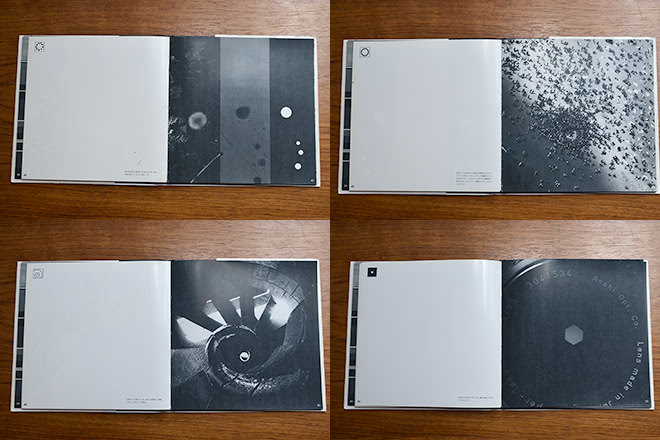
Double-page spreads from "Ghost Collecting Encyclopedia." The relationship between the black and white characters begins to become chaotic, and eventually the black turns into an "empty" existence. These paginations visually capture this as a "vanishing point."
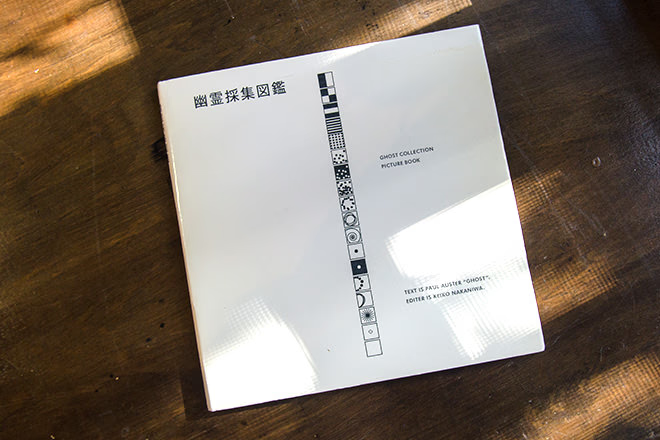
The cover of the Ghost Collecting Encyclopedia.
The current editor-in-chief of the US edition of WIRED, Scott Dadich, comes from a design background *1 , and in an interview he said, "WIRED editors, to the extent that they are creative, are visual storytellers" *2 .
Although I have only recently taken on the role of editor-in-chief, I hope to strive to be a "visual storyteller" who combines both "design" and "editing."
*1 http://wired.jp/2015/03/10/vol15-editors-letter/ "Is design a philosophy for a new era? ~ A message for the special feature on design in Vol. 15" from the WIRED website, as of January 14, 2016 *2 https://www.trnk-nyc.com/stories/scott-dadich-wired/ "AT WORK WITH SCOTT DADICH, EDITOR IN CHIEF OF WIRED" from the TRANK website, as of January 14, 2016
